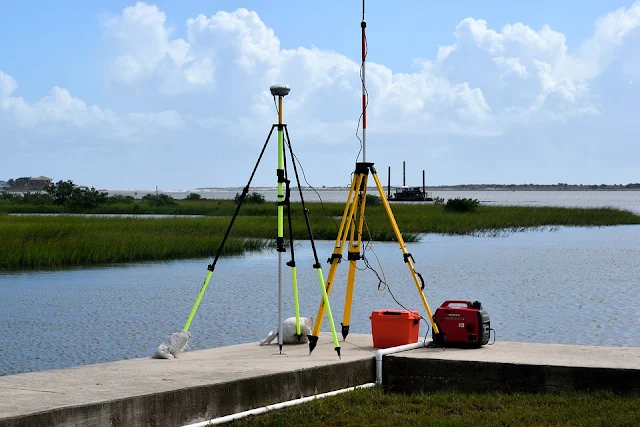Principles of Surveying
- To work from whole to part.
- To locate a point by at least two measurements.
To Work From Whole To Part
- It is the main principle of Surveying.
- A method violating this principle should not be adopted until and unless there is no alternative.
- Its main idea is to localise the errors and prevent their accumulation.
- In surveying large areas, a system of control points are identified and they are located with high precision.
- Then secondary control points are located using lesser precise methods.
- The details of the localised areas are measured and plotted with respect to the secondary control points.
- This is called working from whole to part.
- On the contrary, if we work from part to whole, then errors accumulate and expand to a greater magnitude in the process of expansion of survey, and consequently, the survey becomes uncontrollable at the end.
- This can be explained by taking a simple example of measuring a horizontal distance AB, say about 120 m with a 20 m chain.
- The process consists of measuring the distance in parts, as the length of the chain is smaller than the distance to be measured and is accomplished by the process of ranging.
- In one of the method also called the direct method, various points such as C, D, and E are established independently at a distance of about 20 cm each with respect to the two end control points and the distance AB can be measured.
 |
| To Work From Whole To Part (Image From Book By S K Duggal) |
- As C, D, E, etc., are established independently with respect to the main control points, error, if any, introduced in establishing any intermediate point will not be carried in establishing the other points.
- For example, suppose that point D has been established out of line AB, as D' and E, F, etc., have been established correctly.
- The actual distances DC and DE will be in error (D'C and D'E) but all other distances AC, EF, FG, etc., will be correct.
- Therefore, the error in this procedure is localised at point D and is not magnified.
- This method observes the principle of working from whole to part.
To Locate A Point By At Least Two Measurements
- Two control points (any two important features) are selected in the area and the distance between them is measured accurately.
- The line joining the control points is plotted to the scale on a drawing sheet.
- Now, the desired point can be plotted by making two suitable measurements from the given control points.
- Let A and B be the two control points, whose positions are already known on the plan.
- The position of C can be plotted by any of the following methods:-
- By measuring the distance BC and angle α.
- By dropping a perpendicular from C on the line AB and measuring either AD and CD or BD and CD.
- By measuring the distances AC and BC.
*Self Typed
*Source- Internet, Books, Self-Analysis

